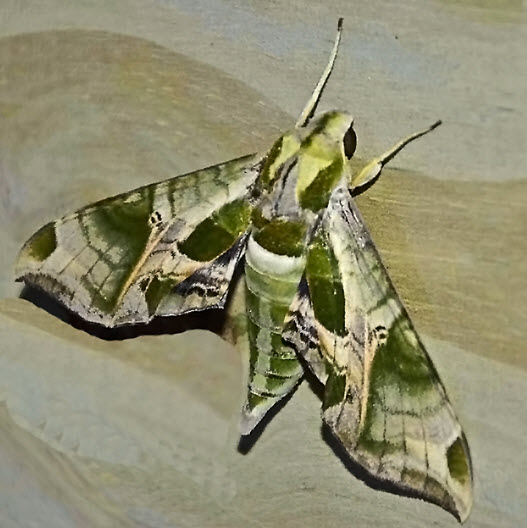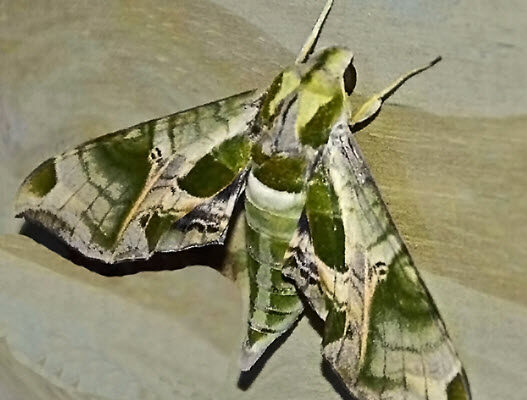Hunters aren’t the only ones in camouflage

Pandora Sphinx Moth (Eumorpha pandorus) is nicknamed the Camouflage Moth. Photo credit: Diane Constable
by Diane Constable
The Pandora Sphinx Moth (Eumorpha pandorus) is nicknamed the Camouflage Moth. It is one of our larger moths with a wingspan between 3 and 4.5 inches. The impressive coloring bodes it well to disguise it from predators. In the evening, it feeds on the nectar of night-blooming flowers like petunias, bouncing bet, and milkweed.
It can be found throughout central and eastern North America and lives in meadows, along streams, and in woodland edges. Although usually found at dusk, sometimes under nighttime lights, the one pictured here was newly emerged from its cocoon and was drying out on our walkout basement retaining wall.
This gentle creature lives for about a year, from egg to adult. Eggs are usually laid on grape vines and Virginia creeper vines and hatch within a few days. It will take several weeks for the caterpillar to develop and grow to its final size of about 3.5 inches long and about as wide as a thumb. It can be reddish-brown to olive-green in color, with 5 white spots that resemble eyes along its side.
If it feels threatened it will rear up an inch or two to try and scare away the danger, but it is harmless. When ready to make a cocoon, it will wiggle into the ground. After a few weeks to a month, the adult will wriggle back up and emerge as a full-grown moth, like the legendary Sphinx rising from the ashes.
Fun Fact: You can search for the caterpillars at night using a UV flashlight ; they will glow in the dark as many caterpillars do!


